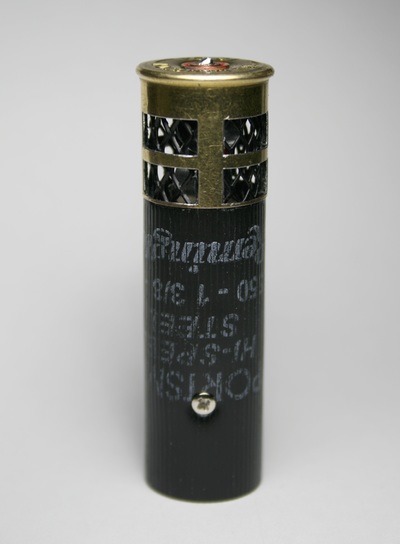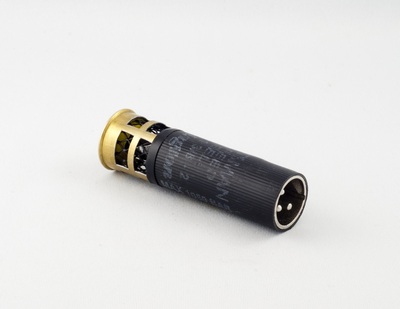Gear Review: 12 Gauge Microphones “Black 212” Stereo Condenser Mic
It can be hard to stand out in the audio world. There’s a near constant stream of new microphone designs, nevermind all the classics that have stood the test of time.
Creating a niche requires a quality product, and a unique design certainly doesn’t hurt. 12 Gauge Microphones, run by Brad Martin and based in Vermont, aims to provide both.
Martin hand builds all of his microphones—into spent shotgun shells. These aren’t just gimmicks though, they are high-quality mics that also happen to look pretty darn cool.
12 Gauge has a number of mics on offer in their color-coded line of small diaphragm condensers: An omni, two cardioids (one with a built-in pad for high SPLs), and the one in question here, the Black 212, a stereo mic with a fixed XY pattern.
The Black 212 has a single standard XLR connector, and comes with a purpose built Y-cable which is great, although I do wish it was labelled or color coded left-right. This is not a huge deal though, as it’s easy to determine which is which and label them yourself in the very first use.
My own first use was as a drum overhead, for jazz drums in particular.
Similar to other 12 Gauge products (I also own a pair of their Green 12 condensers), the Black 212 has a smooth high end: Very un-hyped, yet flattering on the cymbals, and with plenty of detail and clarity in the ride patterns.
It also presents a nice, full mid-range, and low end is what you’d expect from small diaphragm condensers like these—present, but not huge. The mic produced a balanced and accurate stereo image, though not overly wide, more due to the nature of the XY pattern than to the mic itself.
My next test with the Black 212 was on piano. It was a Steinway grand with the lid open and the mic placed a few inches in from the side, toward the middle of the sound board.
Just like on the drums, the mic was not overly bright, but offered plenty of definition on the attack of the hammers. 12 Gauge doesn’t provide frequency response information, but the mics sounded very balanced with a bit of forwardness in the mid-range.
The XY pattern provides a nice stereo picture of the instrument, feeling very centered without the super-wide feeling a spaced pair can give you. The piano sound was full and natural, and fit in with the rest of the jazz combo with little effort.
Finally, I tried the 212 on some hand percussion: Shakers and tambourines.
Like the great Bruce Swedien, I love recording percussion in stereo. It gives a great sense of space, and you can even use that space for panning effects.
The smooth top end was wonderful for shakers, which came through with great clarity, but without being overly bright and shredding your ears.
Similar to what I found on the piano, the XY pattern gives some nice space without making the edges seem to live outside of the mix, which was perfect for this stereo percussion application. I can easily imagine this mic being my go-to for hand percussion as well.
In use, the 12 Gauge Microphones Black 212 is certainly an attention-getter, but interest in them shouldn’t be limited to looks alone. This is a truly wonderful instrument mic; useful in tons of applications with a great, natural sound.
It doesn’t come with a lot of bells and whistles—the mic itself comes in what almost looks like a pill bottle, with the cable just packed in the box along with it, and it does not include a clip. But this is a handmade microphone for $80, and a steal at that price.
I’m hard-pressed to think of a better bargain in pro audio (outside of the rest of 12 Gauge’s line perhaps), and I would recommend the Black 212 for any mic closet in any studio.
Please note: When you buy products through links on this page, we may earn an affiliate commission.








